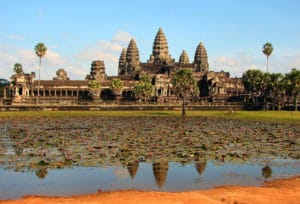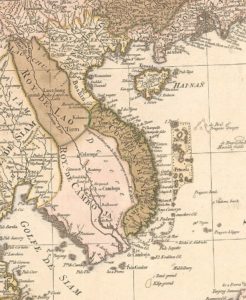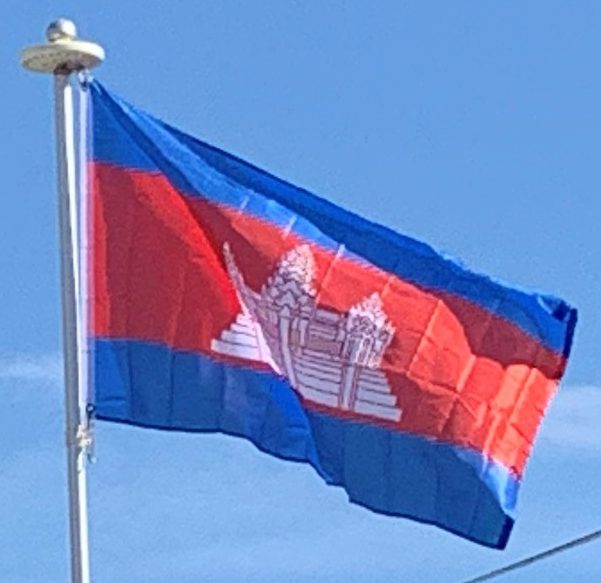The Khmer Empire grew out of these remnants of Chenla, becoming firmly established in 802 when Jayavarman II (reigned c790-850) declared independence from Java and proclaimed himself a Devaraja. He and his followers instituted the cult of the God-king and began a series of conquests that formed an empire which flourished in the area from the 9th to the 15th centuries. During the rule of Jayavarman VIII the Angkor empire was attacked by the Mongol army of Kublai Khan, however the king was able to buy peace. Around the 13th century, monks from Sri Lanka introduced Theravada Buddhism to Southeast Asia. The religion spread and eventually displaced Hinduism and Mahayana Buddhism as the popular religion of Angkor; however it was not the official state religion until 1295; when Indravarman III took power.

The Khmer Empire was Southeast Asia’s largest empire during the 12th century. The empire’s center of power was Angkor, where a series of capitals were constructed during the empire’s zenith. In 2007 an international team of researchers using satellite photographs and other modern techniques concluded that Angkor had been the largest pre-industrial city in the world with an urban sprawl of 1,151 square miles. The city, which could have supported a population of up to one million people and Angkor Wat, the best known and best-preserved religious temple at the site, still serves as a reminder of Cambodia’s past as a major regional power. The empire, though in decline, remained a significant force in the region until its fall in the 15th century.
Dark Ages of Cambodia:
After a long series of wars with neighboring kingdoms, Angkor was sacked by the Ayutthaya Kingdom and abandoned in 1432 because of ecological failure and infrastructure breakdown. This led to a period of economic, social, and cultural stagnation when the kingdom’s internal affairs came increasingly under the control of its neighbors. By this time, the Khmer penchant for monument building had ceased. Older faiths such as Mahayana Buddhism and the Hindu cult of the god-king had been supplanted by Theravada Buddhism.
The court moved the capital to Longvek where the kingdom sought to regain its glory through maritime trade. The first mention of Cambodia in European documents was in 1511 by the Portuguese. Portuguese travelers described the city as a place of flourishing wealth and foreign trade. The attempt was short-lived however, as continued wars with Ayutthaya and the Vietnamese resulted in the loss of more territory and Longvek being conquered and destroyed by King Naresuan the Great of Ayutthaya in 1594. A new Khmer capital was established at Oudong south of Longvek in 1618, but its monarchs could survive only by entering into what amounted to alternating vassal relationships with the Siamese and Vietnamese for the next three centuries with only a few short-lived periods of relative independence.

In the nineteenth century a renewed struggle between Siam and Vietnam for control of Cambodia resulted in a period when Vietnamese officials attempted to force the Khmers to adopt Vietnamese customs. This led to several rebellions against the Vietnamese and appeals to Thailand for assistance. The Siamese–Vietnamese War (1841–1845) ended with an agreement to place the country under joint suzerainty. This later led to the signing of a treaty for French Protection of Cambodia by King Norodom Prohmborirak.
French Colonisation:
In 1863, King Norodom, who had been installed by Thailand, sought the protection of Thailand from French rule. In 1867, the Thai king signed a treaty with France, renouncing suzerainty over Cambodia in exchange for the control of Battambang and Siem Reap provinces which officially became part of Thailand. The provinces were ceded back to Cambodia by a border treaty between France and Thailand in 1907.
